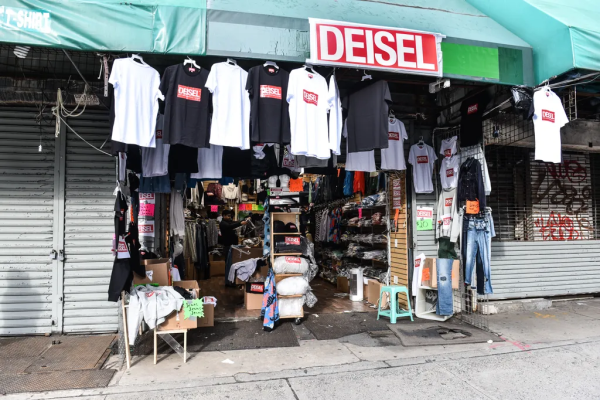It’s probably no surprise for anybody that the fashion industry, for which originality is the most important thing, has created a variety of inventive approaches to tackle the problem of falsification. Some of these brands do not only discover and report counterfeits, but also apply active measures against them, some of which are truly spectacular. They draw inspiration from the problem and create technological solutions.
In 2018, during the New York Fashion Week, the Diesel brand scored a huge success when they opened a temporary shop for fake goods, created by themselves. When it became known that the fakes were made by Diesel, endless queues of influencers and fashion maniacs formed, eager to get their hands on an ‘authentic fake’. So, in this way, instead of concealing the problem, Diesel organised an event that spread across the media with the speed of a forest fire.
The fakes industry pushed Gucci into a collaboration with a street artist whose pseudonym is ‘GucciGhost’ who loved to draw the logo and sign of the brand on walls. Instead of distancing itself from him, Gucci invited him to Milan, and included him in the presentation of its new high fashion collection. A lot of celebrities instantly became fans of the ‘fake’ collection.
These are bold and original solutions that show that even fakes can be turned into an artistic inspiration. In this way, the brands send a message to their clients that they would not give up – they can outsmart the frauds, and they will continue to do so.
Unfortunately, the quality of the fakes’ designs becomes better and better. They manage to fool people that they are buying authentic products, and they only discover the deception if they look very closely. To protect their reputation, the fashion brands have turned the tools for recognition of original products into their priority. They use blockchain technology that provide information about where the product was manufactured, what materials have been used, and whether it is authentic.
Another method that is used is that of radio frequencies (RFID). It enters digital data in an electromagnetic sticker that can be scanned from a radius of 4cm. The technology is also helpful for customs authorities.
photos: gucci, mr-mag, cdn, wikipedia
video: Diesel


